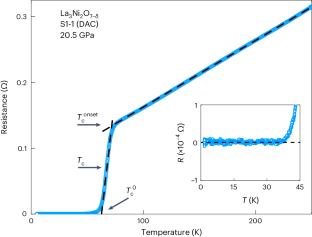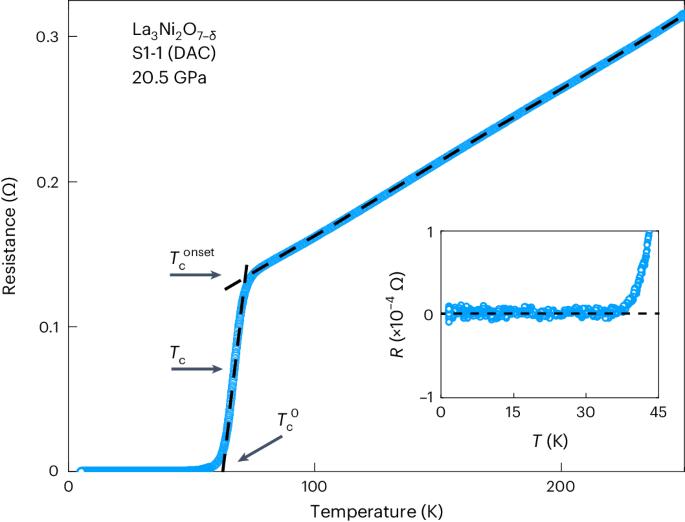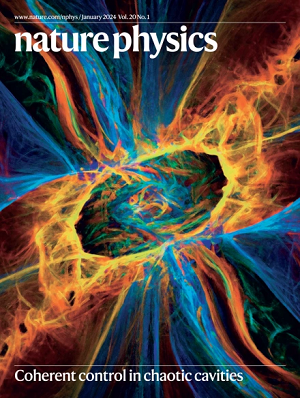High-temperature superconductivity with zero resistance and strange-metal behaviour in La3Ni2O7−δ
IF 18.4
1区 物理与天体物理
Q1 PHYSICS, MULTIDISCIPLINARY
引用次数: 0
Abstract
Recent experimental observations have showed some signatures of superconductivity close to 80 K in La3Ni2O7 under pressure and have raised the hope of achieving high-temperature superconductivity in bulk nickelates. However, a zero-resistance state—a key characteristic of a superconductor—was not observed. Here we show that the zero-resistance state does exist in single crystals of La3Ni2O7−δ using a liquid pressure medium at up to 30 GPa. We also find that the system remains metallic under applied pressures, suggesting the absence of a metal–insulator transition proximate to the superconductivity. Moreover, analysis of the normal state T-linear resistance reveals a link between this strange-metal behaviour and superconductivity. The association between strange-metal behaviour and high-temperature superconductivity is very much in line with other classes of unconventional superconductors, including the cuprates and Fe-based superconductors. Further investigations exploring the interplay of strange-metal behaviour and superconductivity, as well as possible competing electronic or structural phases, are essential to understand the mechanism of superconductivity in this system. Some features resembling superconductivity at high temperature have been seen under pressure in La3Ni2O7, but a transition to a zero-resistance state has not been observed. Now transport studies demonstrate this transition, along with strange metallicity.


La3Ni2O7-δ 中具有零电阻和奇异金属特性的高温超导性
最近的实验观察显示,在 La3Ni2O7 中,在压力作用下,有一些接近 80 K 的超导电性迹象,这也为在块状镍酸盐中实现高温超导电性带来了希望。然而,零电阻状态--超导体的关键特征--并未被观测到。在这里,我们利用高达 30 GPa 的液体压力介质证明了零电阻状态确实存在于 La3Ni2O7-δ 的单晶体中。我们还发现,该体系在施加的压力下仍保持金属性,这表明超导性附近不存在金属-绝缘体转变。此外,对正常状态 T 线性电阻的分析揭示了这种奇异金属行为与超导性之间的联系。奇异金属行为与高温超导之间的联系与其他类型的非常规超导体(包括铜氧化物和铁基超导体)非常一致。进一步研究探索奇异金属行为与超导性的相互作用,以及可能存在的竞争电子或结构相,对于了解该系统的超导机制至关重要。
本文章由计算机程序翻译,如有差异,请以英文原文为准。
求助全文
约1分钟内获得全文
求助全文
来源期刊

Nature Physics
物理-物理:综合
CiteScore
30.40
自引率
2.00%
发文量
349
审稿时长
4-8 weeks
期刊介绍:
Nature Physics is dedicated to publishing top-tier original research in physics with a fair and rigorous review process. It provides high visibility and access to a broad readership, maintaining high standards in copy editing and production, ensuring rapid publication, and maintaining independence from academic societies and other vested interests.
The journal presents two main research paper formats: Letters and Articles. Alongside primary research, Nature Physics serves as a central source for valuable information within the physics community through Review Articles, News & Views, Research Highlights covering crucial developments across the physics literature, Commentaries, Book Reviews, and Correspondence.
 求助内容:
求助内容: 应助结果提醒方式:
应助结果提醒方式:


